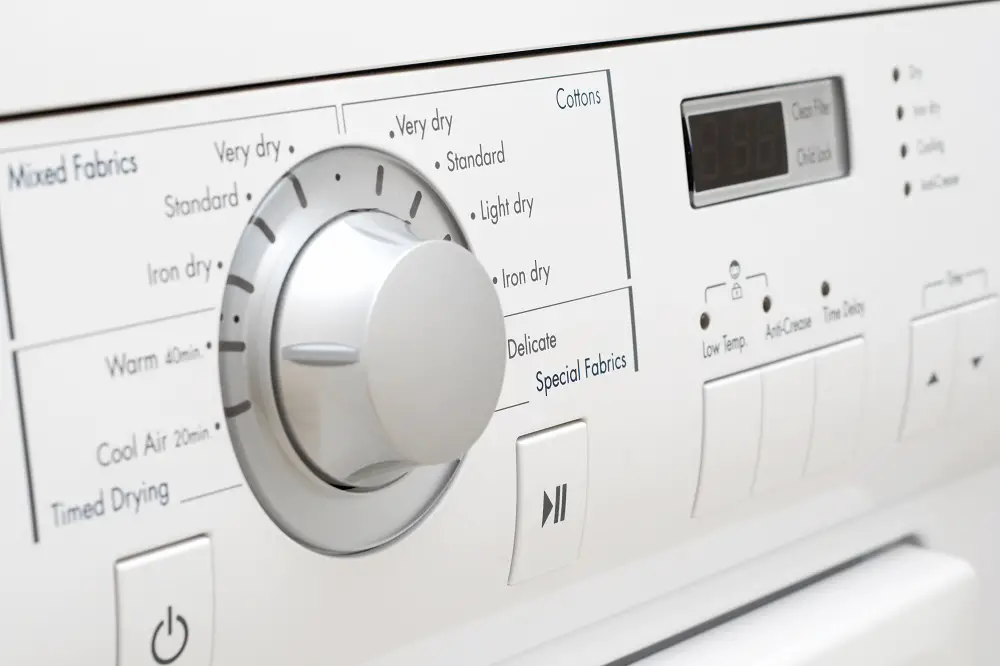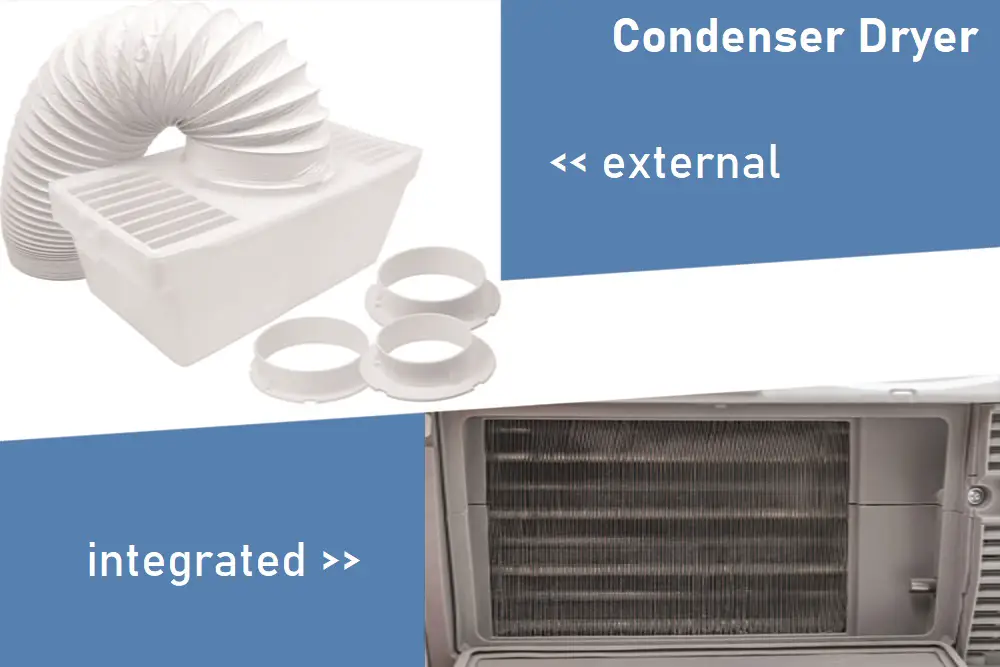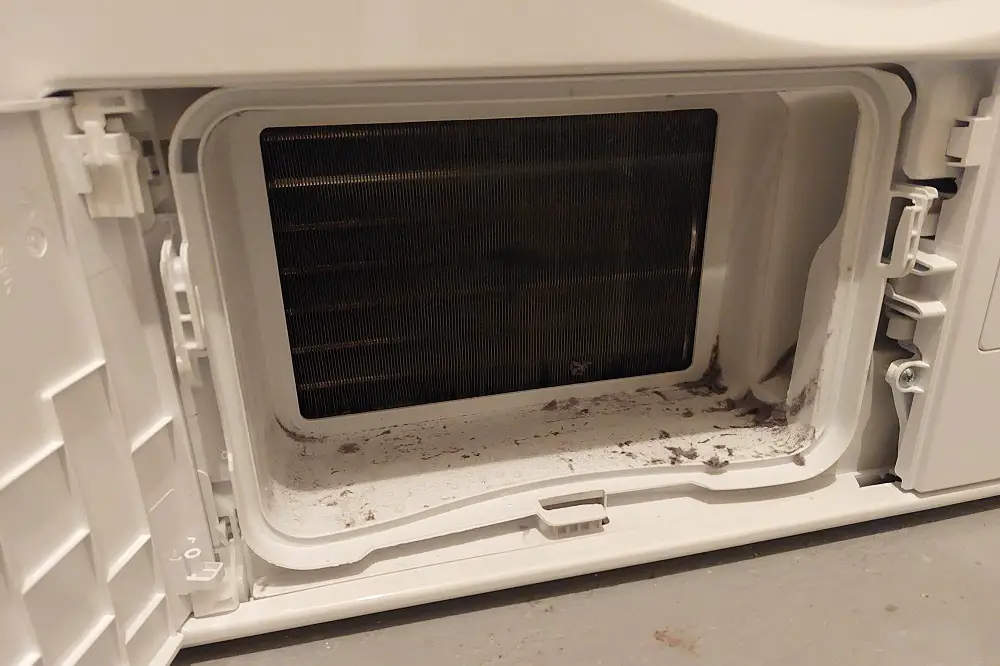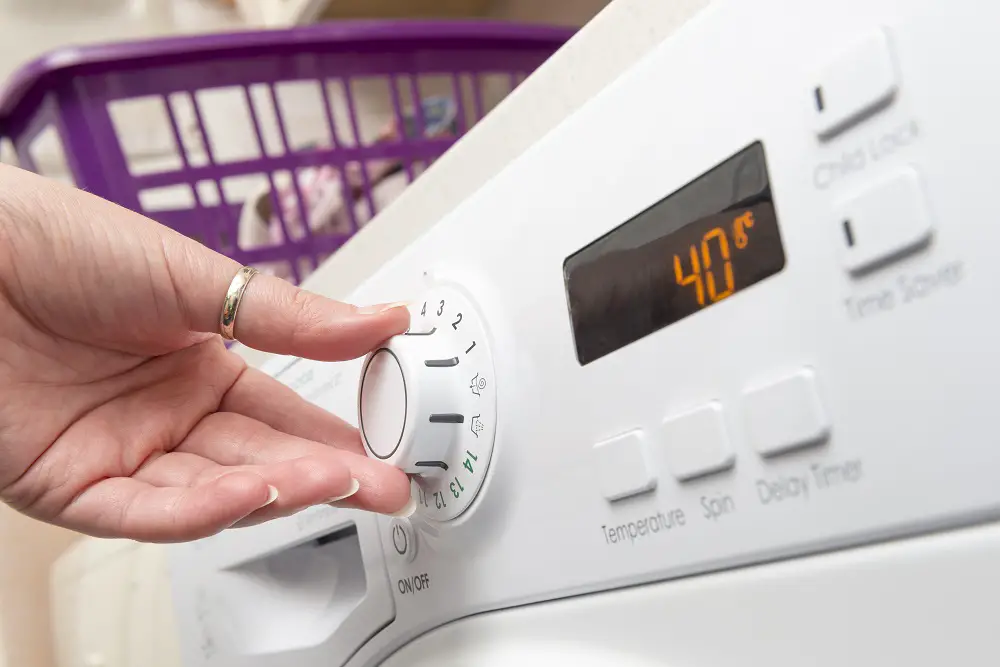Most people looking for tumble dryers have not heard about the sensor drying system. This technology was introduced in the early 1950s and is now used in different models of tumble dryers.
A sensor in a tumble dryer detects the amount of moisture present in your laundry. Its purpose is to make the dryer function according to the moisture detected. The sensor drying technology is worth buying because of its efficiency and how it dries up the clothes in less time than usual.
In this article, we will explain everything you should know about a tumble dryer with sensor drying so that you can make an informed decision on whether or not it’s right for your home laundry needs!
Key Takeaways
- Sensors detect the moisture in the tumble
- The program stops if the desired moisture is reached
- Dryers with sensors save energy
- Not all dryers are equipped with sensors
- Only a few disadvantages exist
Table of Contents
What is a Tumble Dryer With Sensor Drying?
A tumble dryer with sensor drying is a type of technology that can detect the moisture content in your clothes and adjust the heat settings accordingly. This means that it will automatically reduce the heat or shorten the drying cycle which leads to controlled drying results.

This is an excellent feature because it saves energy and money by reducing the amount of time that your clothes take to dry. It also helps reduce wrinkles and keeps items looking fresh for longer periods.
How does a tumble dryer with sensor drying work?
The sensor dryer detects when the clothes are damp and activates the drum to start spinning. As it spins, the drum absorbs water from the clothes.
Once the sensor detects if your clothes reach the desired moisture level, it turns off the heat. The machine does this quickly so that it doesn’t take long to dry your clothes.
The main benefit of this is that you don’t need to monitor the drying process. The machine will do it automatically. This means you can sit back and relax while your clothes are drying, knowing that they’ll be ready on their own.
The sensor drying feature is great for people who like their clothes to be dried quickly but also to stay warm and not get too much shrinkage.
Concerned about too small clothes? Read Does A Tumble Dryer Shrink Clothes? (And How To Avoid It)
Advantages of Tumble Dryer With Sensor Drying System
Saves Electricity
If you wish to save some money on your household electricity bills, then a tumble dryer with a sensor drying system is the best option.
Tumble dryers are more efficient in the sense that they require less electricity than conventional models. The process of tumble drying with a sensor drying system uses less water, air, and heat than conventional drying systems.
Reduced Drying Time
Instead of drying your clothes for the whole 30 or 40-minute cycle (like it’s done with a traditional dryer), a tumble dryer with a sensor drying system detects how much time your clothes need to be completely dry.
Most of the time, your clothes dry up early (in 10-20 mins) because of the specific amount of heat and air distribution.
Automatic
If you are traveling far away or have children at home, a tumble dryer with a sensor dryer is the safest option for you.
The sensor system detects when the clothes are dry and turns off the machine by itself. This not only helps you save electricity but also protects you and your family from electric problems.
See also: Leaving Tumble Dryer On Overnight and Electric Shock From a Tumble Dryer
Durable
As we mentioned earlier, a tumble dryer with a sensor drying system dries your clothes efficiently. This means that the machine operates only on the required amount of heat and drying speed, all according to the condition of your laundry.
This way, your machine stays durable and works well for a longer time.
Wanna have a great dryer’s lifespan? Check this: How Long Do Tumble Dryers Last? Durability And Maintenance Guide
Cloth Quality
The quality of clothes is better than those dried with traditional dryers. The sensors in the sensor drying system detect whether the clothes are wet and then adjust to a specific temperature accordingly.
It also has a special tumbling action feature, which keeps your clothes wrinkle-free.
Smart Functionality
Modern appliances that use sensor technique are often equipped with additional smart functions that allow to check the current state remotely. This way you always know what your dryer is doing and when the laundry is ready.
You can also be informed if the dryer has finished the program and avoid unnecessary checking if you need something urgent or want to avoid shrinkage.
Half Load Possible
With sensor-equipped tumble dryers you can load the appliance as full as you like because the drying process adapts to your remaining level of moisture. A half loaded tumble contains less water and the sensor will stop the program quite early.
With this method you can use your dryer energy-efficient whenever you need anything dried and not only when you have a full load.
Which Tumble Dryers Do Have Sensors?
| Type of Dryer | Sensor Equipped |
|---|---|
| Condenser Dryer | New: Yes Old: No |
| Heat Pump Dryer | Mostly |
| Vented Tumble Dryer | Rarely |
A condenser tumble dryer is ideal when you want to dry your laundry quickly and do not want to rely on an externally vented hose. This also gives you the option to place the appliance anywhere in your home.
Condenser dryers are often equipped with sensors if they are newer models. Older versions are rarely using this feature.
Heat-pump tumble dryers also come under the category of condenser dryers. They consist of an extra cycle that reuses the heat. This makes them efficient, dry clothes faster, and saves energy.
These dryers are the modern standard and do have sensors in most cases.
Lastly, we have the vented tumble dryer which converts water into moist air. These tumble dryers are not very efficient as they simply blow out hot air, which is a waste of energy.
The technology behind this is quite old and these appliances rarely do have sensors.
Tumble Dryers With Sensors
If you are considering buying a tumble dryer with sensor drying technology, here is a list of some best ones:
Beko DTGV7000W
The Beko DTGV7000W is a 7kg freestanding tumble dryer with an anti-creasing feature to help keep your clothes in good condition. Featuring a silent control panel and air drier which can be used separately or together, you can get the best possible results with this versatile tumble dry machine.
Samsung DV80TA020AN
The Samsung DV80TA020AN features a high-efficiency heat pump to help you save valuable energy, and an easy-to-use wrinkle folder that allows it to keep your clothes wrinkle-free. The door is reversible to make removing the wash load as simple as possible. And thanks to the intelligent OptimalDry technology, your clothes will be dry in less than half the time it takes without any added water wastage.
LG 8kg Sensor Dryer
LG’s powerful Dual Inverter Heat Pump technology creates a balanced airflow through the drying cycle, to reduce drying time by up to 50% over conventional dryers. Your clothes stay fresh and ready to wear thanks to Auto Cleaning Condenser which reduces odour and saves energy, plus Allergy Care has been designed to help remove allergens and prevent allergic reactions for everyone who works hard for their clothes.
Bosch- Serie 4 7kg Freestanding Condenser Tumble Dryer
The Bosch ISI8020CG00E is a high-class tumble dryer from the prestigious Bosch family of appliances. The powerful 7 kg capacity offers a large drying capacity and with an advanced 4 drum technology thanks to the unique drum structure. With a sensitive drying system and anti-vibration design, this Bosch dryer promises to deliver a performance without creases and is pleasantly quiet at 65 decibels noise level.
Disadvantages of Tumble Dryer With Sensor Drying
Generally, the sensor dry feature gives you an accurate idea about the time it will take your clothes to dry by measuring humidity in the chamber. However, some of the disadvantages associated with these dryers are:
- They can cause many problems if they stop working.
- They are costlier than other kinds of tumble dryers.
- They can lose their efficiency after a point of time.
- They are not always accurate in sensing the wetness of the laundry.
Frequently Asked Questions
Here are some frequently asked questions related to tumble dryers in general.
How Is Sensor Drying Different From Normal Drying?
The sensor drying system is a lot different from the manual drying system. The most obvious difference is that it uses the sensor to determine when to stop the drying cycle, rather than having a timer that runs until it reaches a certain time limit.
Where Is the Sensor Located in a Tumble Dryer?
The sensor is located inside the drum. It’s attached to a wire that runs along the interior of your dryer, and it’s situated near a heating element.
This can be confusing because many people assume that if they use their tumble dryer with sensor drying, they’ll have an extra step when loading their clothes into it—but that’s not necessarily true!
What Type of Tumble Dryer Is the Most Economical?
A heat pump dryer is the best in terms of energy savings. Since the clothes dry at a lower temperature, running a heat pump tumble dryer is not as expensive as it used to be.
Energy ratings range from D to A+++. Look for an appliance with a good energy rating, preferably higher than an A+.
Pro Tip: Looking to save on utility bills? Let the clothes in longer in the washer machine instead of putting them in the tumble dryer for longer. Spinning is more energy efficient as opposed to tumble drying.
Conclusion
The best thing about tumble dryers with sensors is that they can detect moisture in your clothes. This means that you can always be sure that your laundry will be completely dry, even if the cycle has finished early!
In order to ensure the best performance possible from sensor drying machines, you should get their sensor checked regularly, along with the hoses and vents, for signs of damage or blockages that could cause problems later.
We hope this article provided you with all the necessary information about tumble dryers with sensor drying. Thanks for reading!



